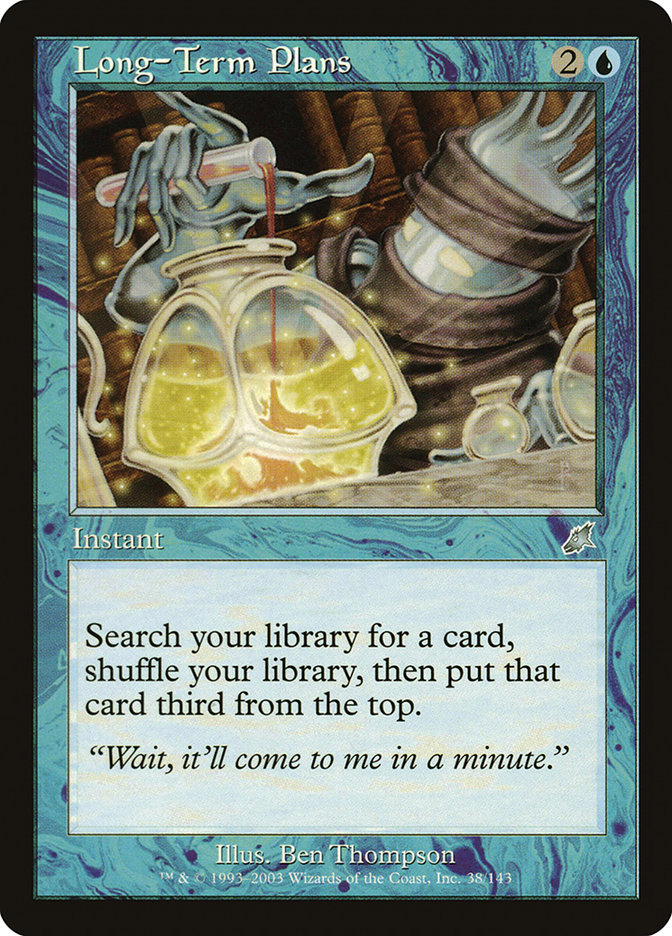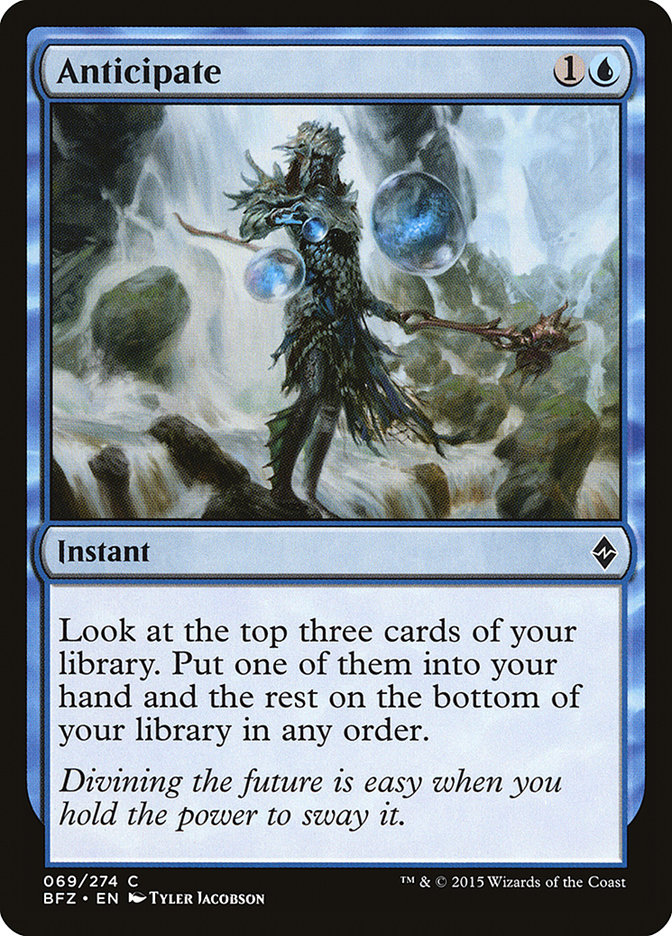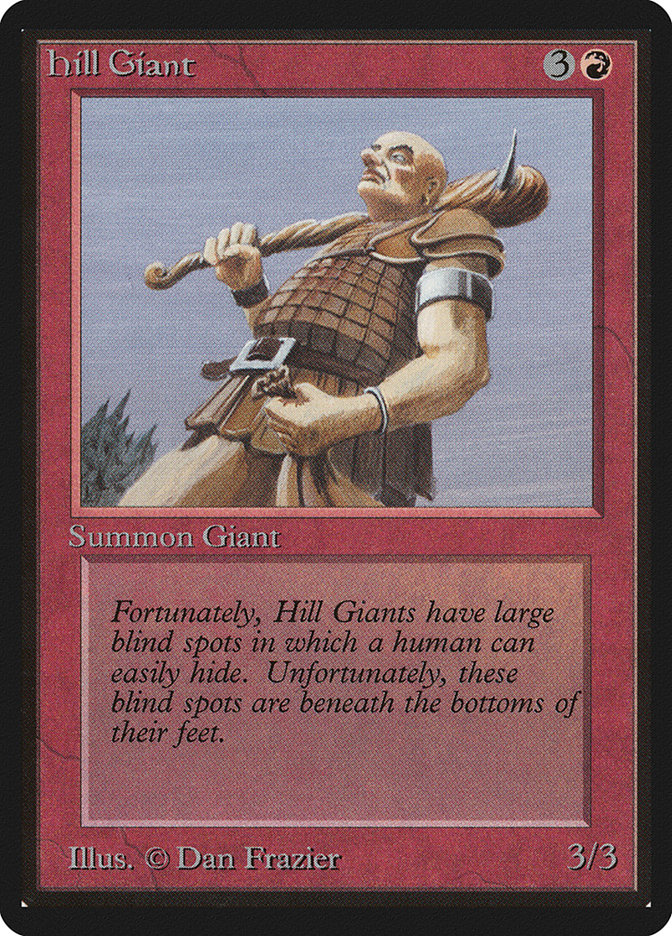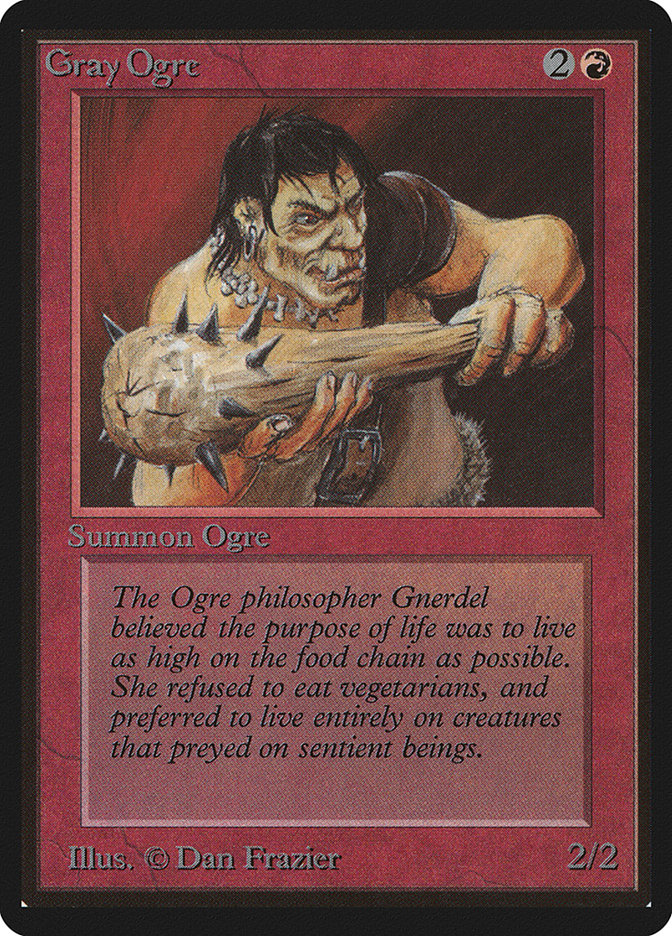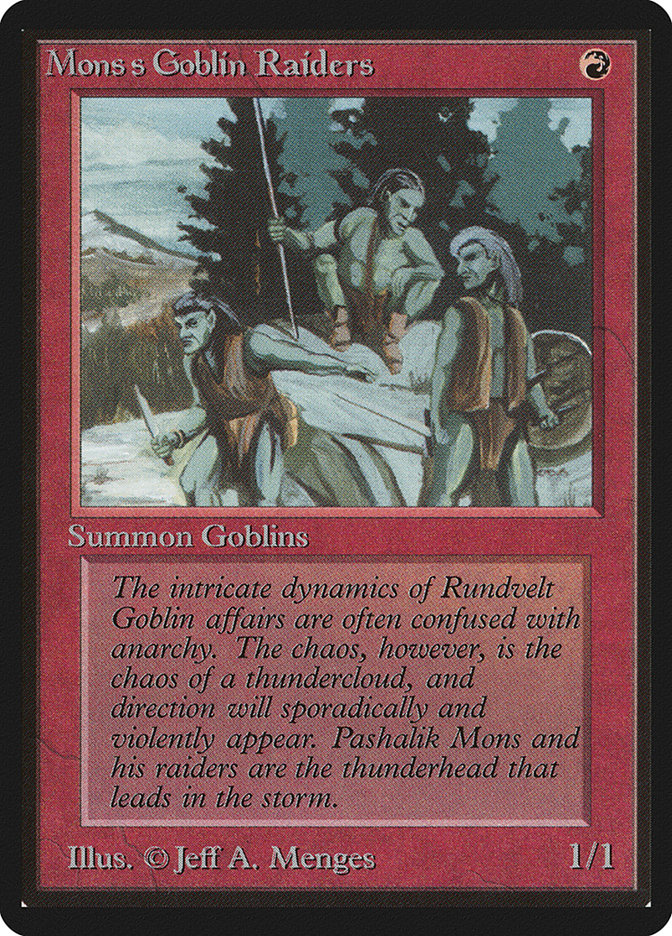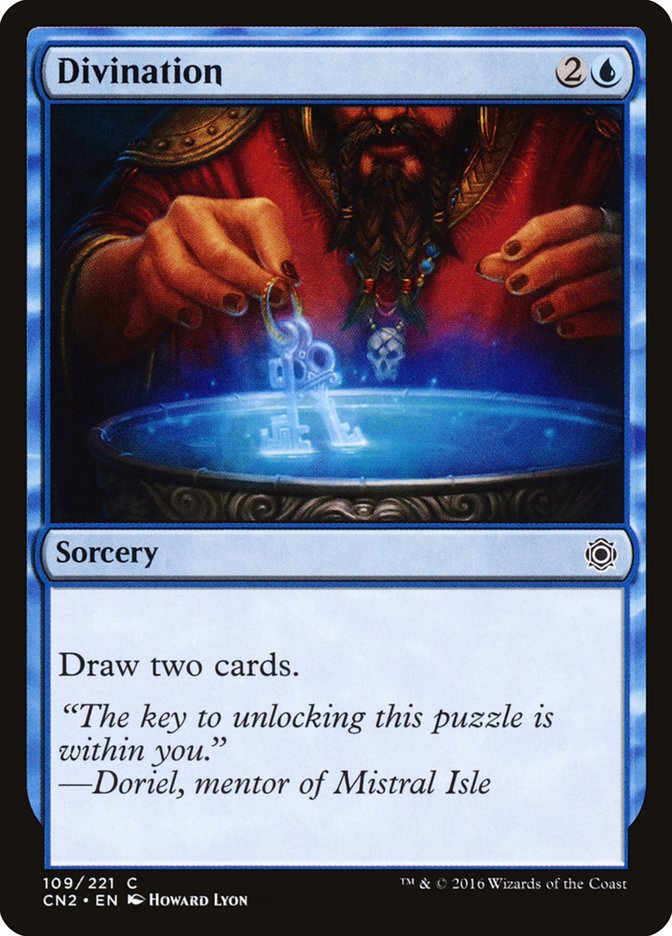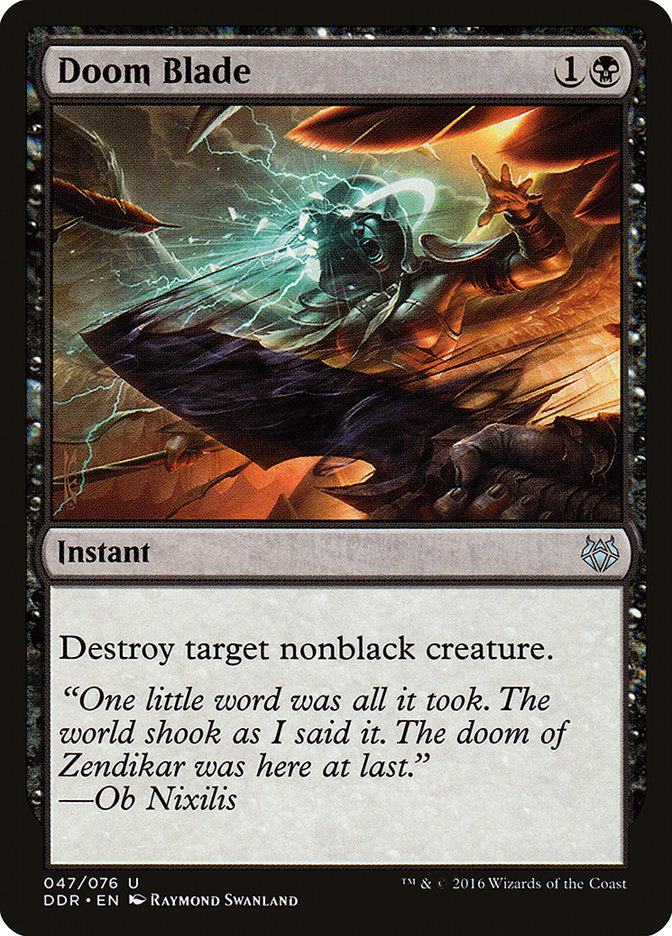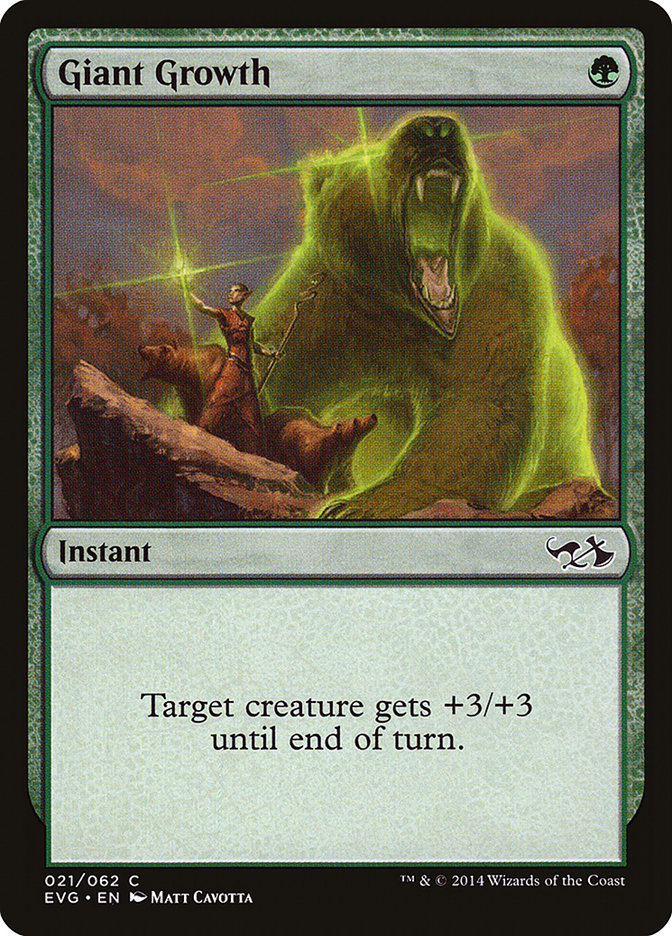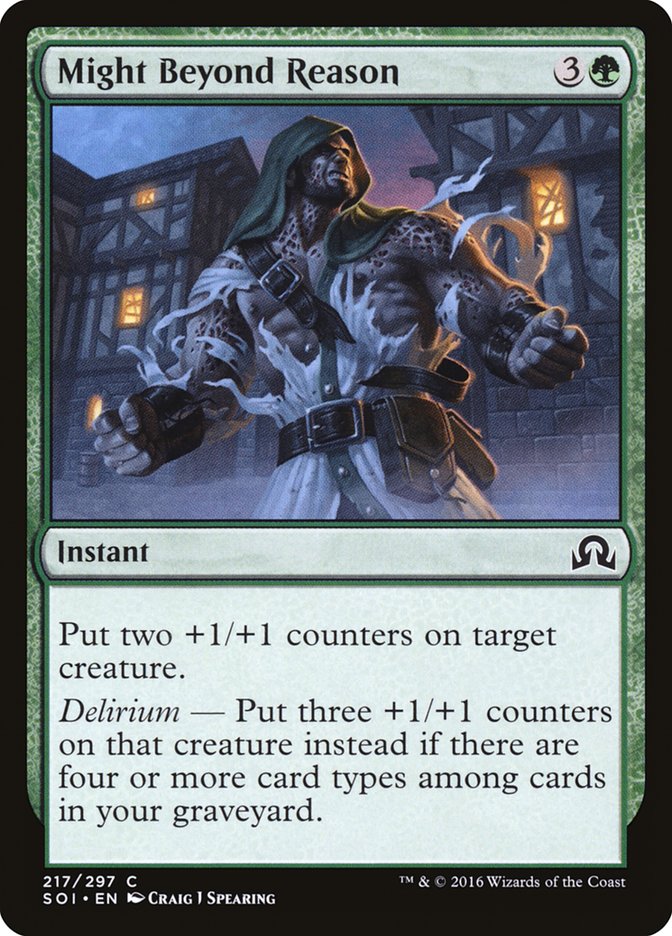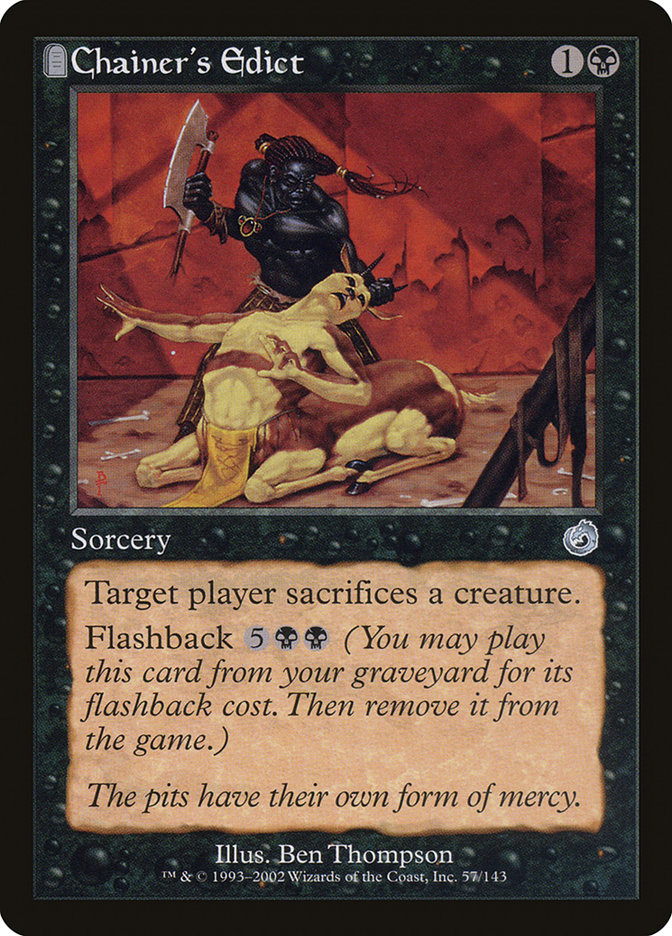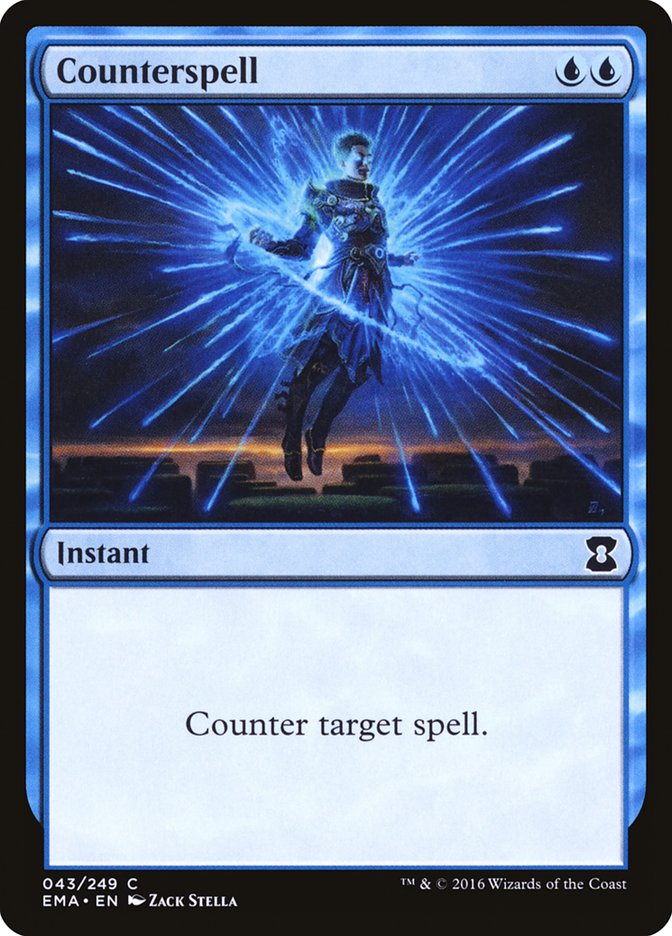“Tight technical play wins more games than all other factors combined.”
Okay, that’s all well and good, but how do we play tightly?
As you might imagine, that’s an extremely deep topic, as it is effectively, “How do we play Magic optimally?” However, it is a topic that can be broken down and discussed in chunks.
One of the most important chunks has to do with making and modifying plans. Being able to make and modify plans (and knowing when to do so) is crucial to being successful at Magic. Plans help guide all of our decisions in a game, as well as in a variety of “meta” games that take place outside of a normal match.
Knowing Is Half the Battle
Know what you are going to do before you do it. Think through each step, at the very least up to the point where you will gain new information. When you can anticipate what that new information will be, keep looking deeper. When you know what you are going to do, it is much easier to make sure it all works together and that you are doing it in the most efficient order.
Have a plan.
How are you going to win the game? What does that moment look like? That turn? What about the turn before that? How can you get there? What do you need to accomplish or have happen to make that possible? Now you have a quest. What do you need to accomplish to make each part of the quest a reality? A plan will help guide all of your decisions in a game. Stay mindful of when things change and the plan needs to be changed. Even a long shot is better than nothing.
Mini-plans matter too. For instance, when your opponent attacks you, what do you need to do to survive? If they have five attackers that are all at least 2/2s and you have four blockers and three life, you know all four of your potential blockers must block (assuming you don’t have an instant). One strategy I find useful is to add up the total damage all of the attackers would deal to me if I didn’t block at all. I count the number of attackers and subtract how many creatures I have that I could block with. Then, for however many unblocked attackers that leaves left over, I start with the lowest-power one and add up that many.
Let’s say my opponent is attacking me with a 5/4, a 3/3, two 2/2s, and a 1/1. If I don’t block, that’s thirteen damage.
If I only have three blockers, I know that at least two of the creatures are scheduled to get through, which means I am going to take at least three damage from blocking alone. Now I have an idea of the range of damage I’m taking this turn is from the various blocking options available to me. Obviously, instants and abilities can change this math, but it makes a good starting point to get a sense of the attack and how it relates to your life total.
Mulligans
Even as early as mulligans, a plan is important. If you have a plan for what sorts of hands you’ll keep and what sorts of hands you’ll mulligan, you’ll tend to make better mulligan decisions, even when presented with unusual hands.
If you were to keep the hand, what does the first turn look like? The second? The third? In addition to having a plan about what to keep or mulligan, each hand calls for a plan specific to it.
Many players on the draw wait for their opponent to finish deciding on their mulligan before looking at their hand. This is usually a waste of time. Getting a draw instead of a win is a massive blow to your chances of winning the tournament. There is a popular misconception that somehow your opponent reading your face is going to give them some big advantage during mulligans.
Please.
If your opponent can tell the contents of your hand by your face, withholding that information during the mulligan phase is a very small piece of the puzzle. Obviously you don’t want to reveal information to your opponent to help them, but we are talking tiny considerations compared to the very real possibility of running out of time. Additionally, having an extra twenty seconds to plan is still an extra twenty seconds to plan. Maybe you look at the hand and your first thought is to keep it, but with an extra twenty seconds of time to reflect on it, you realize something you overlooked that makes you want to throw it back.
Think While Your Opponent Is Thinking
In general, most players spend too much time on things that aren’t important, and sitting around doing nothing. When it’s your opponent’s turn, you can spend that time thinking!
A crucial component of becoming a strong player is the habit of thinking whenever your opponent is thinking about things.
● Sometimes, you’ll want to figure out how you’ll block when they attack.
● Sometimes, you’ll want to figure out what your next turn might look like.
● Sometimes, you’ll want to think about what cards you believe are in your opponent’s deck.
● Sometimes you’ll want to figure out what makes sense to be in your opponent’s hand, given the plays they’ve made and are making.
● Sometimes, you’ll want to figure out what the game would have to look like for you to actually win.
There is no shortage of things to think about in any given moment, and if you’re ever not sure of what to think about, ask yourself:
“What am I doing right now? What am I trying to accomplish?”
Sequencing
Most players also do don’t spend enough time in the most important places. For instance, when you draw your card for your turn, you generally want to figure out what the rest of your turn basically looks like. At the very least, you want to know everything you’re going to do up to the moment where there is new information.
People have a tendency to just play a land at the beginning of their first main phase, since they know they will want to eventually. While it is important to make sure you remember to do things you know you want to do, little mistakes will pop up here and there. For instance, if you play the only land in your hand to start your main phase and then cast a Divination, you could draw a land. What if the land you drew would allow you to cast a different spell? What if the land you drew enters the battlefield tapped and you were just going to waste that one mana?
When you have multiple plays you are fairly certain you want to make, the best default ordering involves taking actions that give you new information first. If you have a Divination and a Doom Blade, casting Divination first gives you new information that could impact whether or not you still want to cast Doom Blade.
However, if your opponent reasonably might stop you from doing something, that’s new information, too. For instance, if your opponent has a Counterspell in hand (or might have one), you may want to cast a card first that, if it got countered, would change your follow-up play.
Looking ahead as far as you reasonably can doesn’t just mean up to a spot where your opponent has a decision. For instance, if you have a reasonable amount of confidence about how your opponent will block, what does that mean for the rest of your turn?
Deny Your Opponent Information
A corollary to making plays that give you information first is to deny your opponent the same. When you know you are going to do two things, it is generally better to do them in the order that gives your opponent the least amount useful of information at each point that they need to make decisions.
For example, let’s say you know you are going to attack with your 3/3 into their 2/2, and that the only two cards in your hand you can play are a land and a 4/4 that will leave you tapped out. If you play your land, cast the 4/4, and then attack, it’s very safe for your opponent to block with their 2/2 and cast Giant Growth. If you attacked first, you’ve got more cards in your hand that represent potential removal spells or tricks, not to mention all of your mana available to do things.
Even if they don’t have a trick, however, they are gaining valuable information about your hand. By tapping out for your creature and then attacking, your opponent has powerful evidence that you don’t have a Giant Growth of your own, and at least some amount of evidence that you don’t have a Shock. After all, if you had a Giant Growth or a Shock, you would clearly want to attack first, in case you needed to use it.
While it is true that this can lead to bluffs that only work on good players (most people not realizing what it is you are bluffing), in general, attacking with your 3/3 into a 2/2 while tapped out is going to cost you much more edge than any amount of misinformation would gain. There are always exceptions, but it’s not the norm, and spending your precious time and energy always looking for the exceptions, the unique cases, is generally not a great return on investment compared to just focusing that time and energy on making tight technical plays.
Whether to play a land before or after combat is an interesting question. When you have plenty of cards in your hand and only a small amount of mana, it’s generally good to play a land before, since that increases the range of possible plays you could reasonably make. Even if they aren’t plays having to do with the cards actually in your hand, your opponent doesn’t know that. If you don’t play your fourth land before combat but just attack with three open, and then after combat you play your fourth land, your opponent now has evidence that you don’t have Might Beyond Reason in your hand.
While playing a land before combat does give you the ability to represent more potential, the other side of the equation is that now your opponent has knowledge of one more card from your hand. Once you have enough mana to make every play you reasonably could, playing a land before combat is actually just giving your opponent free information (in general, as there are always factors that could impact this, like if your opponent might Clash of Wills your Giant Growth).
How Many Extra Lands Should We Hold Anyway?
This is an important spot to know what your deck’s plan is and what your plan is this game. If you have cards that cost eight mana, playing your sixth land is typically a safe bet. However, if you have no card draw and no other cards in your hand, you can usually hold your last card, even if you don’t yet have enough lands on the battlefield to cast the most expensive cards in your deck.
Let’s say you’ve got five lands on the battlefield and the only card in your hand is a land. If you play it, your opponent now has perfect knowledge of your resources for making their plans. If you hold it, there are many, many cards it could be, which leads to them making worse decisions.
Now, if you draw your card that costs eight, you can play the land you already had as your land for the turn, and you never missed a beat. If you draw another land, you can play one of the two lands. Follow this baseline plan and you won’t get stuck drawing your eight-drop while you have six lands on the battlefield and two lands in your hand.
Of course, you always want to be aware of what could change this basic path. Ask yourself, “What is the most amount of mana I could possibly want next turn?” If your deck has Divination in it, you might want to play your seventh land, even though there’s nothing in your deck that costs more than five. If your deck has Tormenting Voice in it, you might not want to play your seventh land after all.
It’s important to consider not only the casting costs of the cards in your deck but things like kicker, Flashback, and activated abilities. If you have Chainer’s Edict in your deck, even the ninth land on the battlefield has meaning.
Will You Use a Trick?
When you have instants in your hand, it’s generally good to consider whether or not you might use them before attacking. For instance, if you attack with your 3/3 and your opponent blocks with a 2/2, you might not want to Giant Growth your 3/3, leaving you one mana short of playing your 4/4. If you wait to decide whether to save your 3/3 after your opponent has already cast their Giant Growth, you are at serious risk of leaking information to your opponent. We’ve all seen that person that tanks on whether or not to Counterspell every possible spell when they have a Counterspell in hand. You don’t want to be that person!
It’s usually good to take a moment to consider things after each new piece of information your opponent gives you; however, that time is typically best spent asking yourself if this changes things. If the answer is no, proceed. If the answer is yes, then figure out the new plan. If you have to spend this time deciding what to do, your opponent gains valuable information.
By contrast, if you already know you aren’t going to Giant Growth to save your 3/3, you can just put it into the graveyard quickly, which will mislead most of your opponents into believing you don’t have a Giant Growth. That’s a particularly valuable card to hide the knowledge of. If you are visibly deciding whether or not to Giant Growth, the Giant Growth will be less effective later. If your opponent believes you don’t have one, they are more likely to walk into a situation where it is especially potent.
Sideboarding
At a very basic level, it’s good to have an idea of what your sideboard plan will be. At the very least, you want to have a general of which cards are good in which matchups, and what sorts of cards you can cut and where. That said, it’s important to be able to modify the plan. Memorizing plans that involve bringing in this, this, and this, and taking out that, that, and that, are at serious risk of falling short if your opponent’s deck strays from the path in any way. It’s important to know more than just what cards are planned to go in and out.
You want to have an idea of why.
You want to have an idea of what your gameplan is after sideboarding (whether or not it is changing in a meaningful way), and you want to have an idea of what your opponent’s sideboard plan is likely to be. If you know their deck sideboards in creatures, you can improvise better and not accidentally cut all of the cards that could possibly deal with the creatures they are bringing in.
As far as executing the actual physical operations involved with sideboarding, there are lots of possible plans. Here is one of my favorites:
Fifteen-Card Sideboard
When time is not a pressing factor, and especially when I am familiar with a matchup, I like to shuffle all fifteen cards from my sideboard into my deck. Then I go through my deck and pull out fifteen cards to cut. If I know which fifteen to cut, perfect. If I don’t, I start by cutting all of the cards I want to cut and see where that leaves me.
If I pulled out more than fifteen, I set aside all of the strictly worse options and look at all of the options I could conceivably put back in. If I need to put two cards back in, which two of these five will it be? Sometimes this includes extra copies of cards we are playing. Just because we have two Doom Blades in the deck, that doesn’t mean the third Doom Blade is better than the first Duress.
If I pulled out less than fifteen, I look through my deck again and identify all of the possible candidates. How many more cards do we need to cut? What are the options? By looking at them side-by-side, we’re better able to isolate the real question at hand. After all, it’s not, “Is this card fine against that deck?” The real question is, “Which of these two cards would be better against that deck?”
Playtesting
Playing games without any direction is akin to just playing cards without a plan. In order to make effective use of playtesting time, you need to know what you are trying to accomplish. Are you preparing for a specific tournament? What are your constraints? For instance, do you know already know what deck you are going to play and are just practicing playing it, tuning it? Are you restricted by card availability? Are you playing to win the tournament, or are you more interested in showing off a new combo, even if it costs you win percentage?
How much time do you have to test today? How many more times will you have to test before the tournament? What are your priorities in testing? Is there a list of decks you want to try? Are you more focused on trying sideboard options? Are you just trying to get reps in against the most popular decks? Is there one crazy deck you want to try, but if it doesn’t seem promising, you will switch to something you know?
If you have less playtesting time than you’d like, do as much as you can between sessions. If you spend the first 30 minutes of your playtest time proxying a deck, that’s 30 minutes less time to playtest. The same is true for a second deck if the first deck doesn’t work out.
When you actually sit down to play games, decide which kind of session this is. If you are trying to see if a deck works or seems promising at all, just playing a few games against one of the most popular decks can be very useful. If you are trying to see how a matchup feels, I recommend ten-game sets with each side going first five times. Sometimes you are just trying to get a feel for a new deck, but when you are dealing with a deck you know or that is an existing strategy, it’s often better to play four games pre-sideboard, six games post-sideboard (as that is the approximate ratio of pre- to post-sideboard games). Almost everyone is underprepared for post-sideboard games, so it is one of the easiest places to make large gains in win percentage from spending time and focus on.
When you are actually playing games, don’t let yourself take things back. Believe me, I know how easy it is to rationalize taking back moves. It’s also generally okay to let your testing opponent take back plays if they want. I like to encourage my opponents not to take things back, as I want them to get the best practice they can get; however, I’m not going to force them to play that way if they don’t want to.
As you play your games, keep track of wins and losses, as well as who played first each game (and make sure you actually alternate). Additionally, jot down notes of things you want to think more about, later. What did you learn? Does any of this change your plan for testing, moving forward? What do you want to think more about? What mistakes did you make?
Conclusion
We’ve barely scratched the surface, not only of making and modifying plans but also of the range of places in Magic in which they are important. Hopefully, however, this will help expand the range of things we think about, and consciousness of what the plan is in each of these areas, as well as lead to further thought about where else we can recognize the need for a plan.
By the way,  you guys.
you guys.
I really appreciate everyone that reads my articles, whether they send me a message on social media, come up and talk to me at an event, or just take something away from it and find it useful. I feel very fortunate to have an opportunity to write and talk about what I love, and you make it possible, and you make it rewarding.
Thank you.


